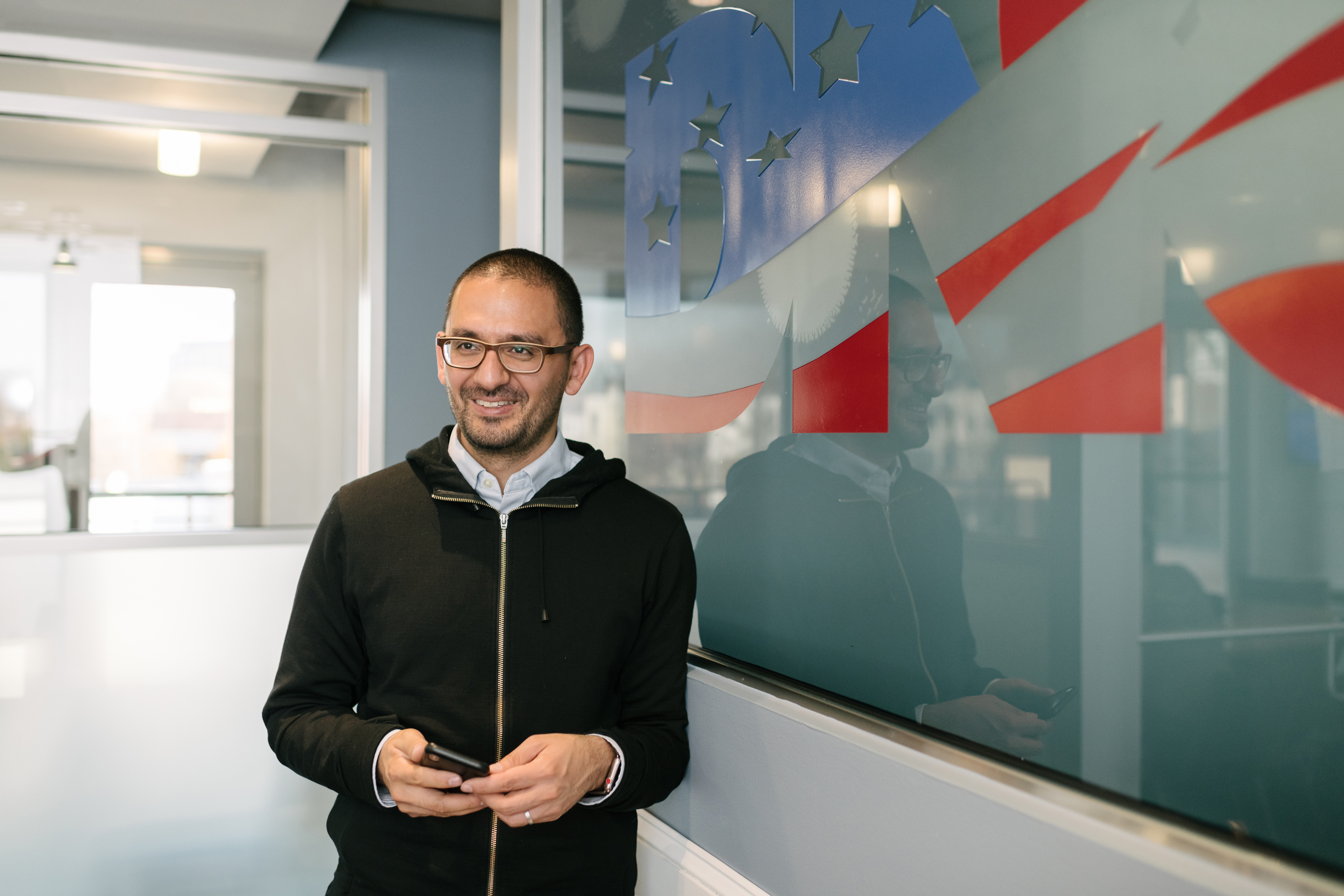The Man with a Plan to Upgrade the Democrats

Politics has become a technological arms race. In the 2008 and 2012 U.S. presidential elections, the Democrats outgunned their rivals. In 2016, the Republicans fought back, using big-data analytics and microtargeting of online ads to help propel Donald Trump into the White House. Raffi Krikorian wants to get the Democrats out ahead again. As the chief technology officer of the Democratic National Committee, the MIT graduate is reshaping his party’s tech strategy. Krikorian, an expert in software engineering, previously led Uber’s Advanced Technologies Center and got its first fleet of driverless cars on the road. Before that, he headed the team that managed Twitter’s tech infrastructure. He spoke with MIT Technology Review’s San Francisco bureau chief, Martin Giles.
Why did you leave a high-profile job in Silicon Valley to take a post at the DNC?
After the presidential election, I just felt that the world was broken and I needed to find a place where I could apply what I’d learned in my previous roles to see if I could make a difference.
During the election, the DNC suffered a damaging e-mail hack. What steps have you taken to improve security?
Security’s an arms race. We have a target on us in the same way that most multinational corporations do, but we don’t have the budget of a big company. All our services such as e-mail have now been moved to cloud infrastructure run by companies like Microsoft and Google. We’re also focusing on culture change. We actively phish our own people and publicize internally which teams have the worst compliance. We’re also in the final stages of hiring a chief security officer.
What keeps you awake at night beyond security?
In electoral politics, unlike other jobs I’ve had, you can’t move the ship dates. I’m always worried whether we’ll have enough time to make the kinds of technological and cultural changes we need to make across the party. We’re not just trying to catch up to where we think the Republicans are; we’re attempting to do a massive leapfrog.
What progress have you made?
Campaigns are incredibly intense from the outset, and campaign managers tend to stick with what they’ve done before or to make a few incremental changes. We’re encouraging them to experiment with more revolutionary technologies. We’re creating the infrastructure to do real-time analytics and to make data science tools widely available and easy to use. And we’re working on a platform strategy that allows us to easily plug in and vet new technologies for things such as canvassing and voter mobilization.
Do you see AI being used more extensively in future campaigns?
We need to be starting long-term, authentic conversations today with every American in order to get to the next presidential election in 2020. That means developing a deeper appreciation of the different issues that interest people. I think that artificial intelligence and machine learning will help us to better understand and segment audiences on a scale that’s not been done before, even by some of the biggest companies in the world.
Are companies like Twitter and Facebook doing enough to tackle fake news and its influence on political campaigns?
No, I don’t think my former employer or Facebook are doing enough here. It’s certainly a very difficult problem. At the heart of it are things like fake accounts, hijacked accounts, and trolling accounts. We’re now seeing outside researchers doing some really interesting work to try and identify the bots spreading fake news.
How can we get more transparency in online political advertising?
Part of the answer is greater clarity from social platforms. They need to make it obvious who is paying for political ads online and how much they’re spending. This would fix a lot of the problem, but there needs to be some formal regulation of online political advertising too.
Digital voting systems are vulnerable to hacking. What can be done to make them more secure?
From a technology standpoint, I think it’s going to be a combination of open-source software with verifiable code and paper trails. If we had a lot of academics willing to help us with verifiable code, and paper trails to show what the electronic machines actually recorded, we’d be in a much better place. I would love to see national standards that every state would need to follow when purchasing voting machines.
Given your experience at Uber, when do you think we’ll all be heading to the polls in driverless cars?
Hopefully, a whole bunch of people will be using them to vote in the 2024 presidential election.
Deep Dive
Policy
Is there anything more fascinating than a hidden world?
Some hidden worlds--whether in space, deep in the ocean, or in the form of waves or microbes--remain stubbornly unseen. Here's how technology is being used to reveal them.
What Luddites can teach us about resisting an automated future
Opposing technology isn’t antithetical to progress.
A brief, weird history of brainwashing
L. Ron Hubbard, Operation Midnight Climax, and stochastic terrorism—the race for mind control changed America forever.
Africa’s push to regulate AI starts now
AI is expanding across the continent and new policies are taking shape. But poor digital infrastructure and regulatory bottlenecks could slow adoption.
Stay connected
Get the latest updates from
MIT Technology Review
Discover special offers, top stories, upcoming events, and more.